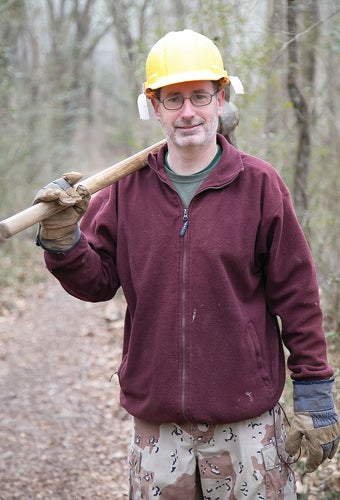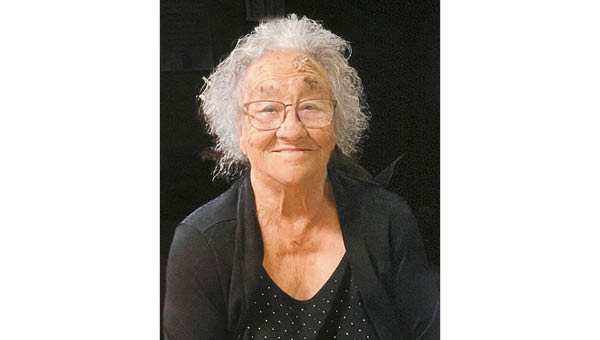Stoney Creek resident and retired Navy veteran hopes to recruit more local trail maintainers
Published 1:03 pm Monday, March 9, 2015

Star Photo/Brandon Hicks
Tim Stewart, who earned the trail name “Mountain Squid” during his Appalachian Trail through hike, prepares to help the Eastman Hiking Club finish up some trail maintenance at the blue blaze to Laurel Falls on Highway 321 in Hampton.
Every year since 2006, Stoney Creek resident Tim “Mountain Squid” Stewart has made a nearly 300-mile drive to a Forest Service road that puts him within a mile of the Appalachian Trail’s southern terminus — Springer Mountain.
“I go the last weekend of March through the first weekend of April,” Stewart said. “I usually get there like Friday night, set up camp and hang out until usually the following Sunday or Monday.”
Most people will make the drive to Georgia’s Amicalola State Park with plans to begin a more than 2,000-mile journey, but for Stewart it’s about documenting as well as meeting and greeting those folks.
The very first time Stewart made it to Springer Mountain in 2004, he was actually one of those determined hikers setting out to complete the entire AT.
“It took me three seasons, but I did most of it in 2004,” he said. “I got up to New Jersey in 2004.”
That was the same year Stewart was on track to retire from the Navy where he served as a culinary specialist. He had accrued around 105 days of military terminal or what is sometimes called transitional leave.
“When I began the trail in 2004, I was actually still in the Navy,” he said. “I was able to check out of my command and still be in the Navy. I decided to just start hiking.”
While hiking, he found a friend on the trail who also had ties to the Navy. Then on the second day, his new friend gave him his trail name.
“He said, ‘How about we call you squid?’” Stewart said. “Sailors have been called squids before.”
Stewart said he felt like that trail name was too commonplace. Stewart told his friend he wanted something with a little more pizzazz. So, “Mountain” was added and his AT identity was born.
Now when Stewart introduces himself as Mountain Squid to the hikers beginning their northbound AT treks, he will jot down a few notes about each person he meets. He notes the date, where the hiker is from and their name or trail name, if they have one at that point.
“I just like going down there to meet and greet,” Stewart said. “I also like to do a little bit of trail magic.”
But this interesting hobby isn’t just for personal gain. Stewart is in charge of updating a spreadsheet on a very popular online forum for AT enthusiasts called WhiteBlaze.net.
Serendipitously, there was going to be a void to fill on the forum around the same year he started driving to USFS 42. He contacted the moderator to see if he could help out.
“I just noticed that somebody else had been doing it,” he said. “Then one year nobody had posted anything about it.”
Hikers can make a post on the forum telling Stewart what day they have picked to start hiking the entire AT. Once they do that, they can also sign the online hiker registry.
“Then I put it all into a spreadsheet so that people can see who else is starting on say April 1,” Stewart said.
Stewart said he hopes his job on the forum helps bring through hikers together more easily.
“Everybody who plans to start on a particular day can see that there are say 12 other people starting that day,” he said. “In theory, they can send messages to each other.”
There’s also another thread that Stewart updates annually called “Observations from FS42,” which was his first post on the website.
“It’s basically statistics from my first time out there,” he said. “It was observations about people starting off with heavy packs. Every year when I go to Springer Mountain, I update that thread with information about how many people I saw and silly things.”
There’s a trove of interesting people Stewart has written about on his thread.
“There was a guy who started off with a shopping cart and a lady who took a cat,” he said. “There was another lady with a bird; it was a parakeet. A couple years ago, there was a guy who started off with a cello with a battery pack. It was a real, regular cello.”
Stewart has also met plenty of people starting off their trip with a whopping 70-pound pack – probably about the same weight some parents feel has been lifted from their shoulders when they drop off their children to begin the six-month journey. Stewart has witnessed many of these send offs.
“There are a lot of times that parents have no idea what to expect,” he said. “So, I think I help ease their worries.”
Although the peak season for northbound AT hikers is spring, Stewart’s love of the AT is year-round.
Stewart is a member of the Eastman Hiking Club, which maintains 134 miles of the AT from Sam’s Gap to the Virginia state line. Stewart is currently assigned a section of the AT to periodically check. He said his section is very hard to access and is about four miles south of Dennis Cove and includes the Moreland Gap Shelter. Stewart has a total of around 3,200 hours of trail maintenance work, and he averages about 500 volunteer hours a year.
“My section goes from Bitter End to Canute Place,” he said. “That’s hiking northbound.”
The AT was one of the main reasons Stewart chose Carter County as his permanent residence.
“After I did my portion of the trail, I needed a place to live,” said Stewart, who is a northern Virginia native. “I just decided to live here. There are so many AT access points here.”
Once he was settled into the area, he sought out Hampton resident Bob Peoples. It was through Peoples that he found another AT-related hobby — trail maintenance.
“One day I just went out to his place and introduced myself,” he said. “That’s when I started coming out.”
The pickmatic is one of his favorite tools to use during his work maintaining trails.
“It’s heavy enough to chop roots, but it can still move rock,” he said. “You need something big to help you move rocks and that can be done with a pick.”
Working with rocks is his favorite aspect of trail maintenance.
“When you place a rock as a step, you can immediately see accomplishment,” he said. “I feel like I’ve increased my ability to identify and place rocks adequately enough that when someone steps on it, they aren’t going to slide down or slip and fall. I’ve achieved a good eye for how to place and maneuver rocks on the trail.”
When he goes for a hike in Carter County, there are places he stops to reminisce over the work he did in the area. It’s safe to say he’s played some kind of role in taking care of every portion of the AT in Carter County.
“I go back all the time,” he said. “Every time I put in a step or something I can say ‘Hey, I put that one in.’”
Stewart said he would be overjoyed to see more locals take ownership of the trails in the area by getting involved in this type of volunteer work.
He has invited anyone interested in volunteering to do trail maintenance to contact him at mountainsquid04@gmail.com.
“No experience is necessary,” he said. “You just need to be physically able to hike into some of the places we maintain.”
Stewart said the Eastman Hiking Club website — TEHCC.org — is also a great resource to learn more about trail maintenance.





